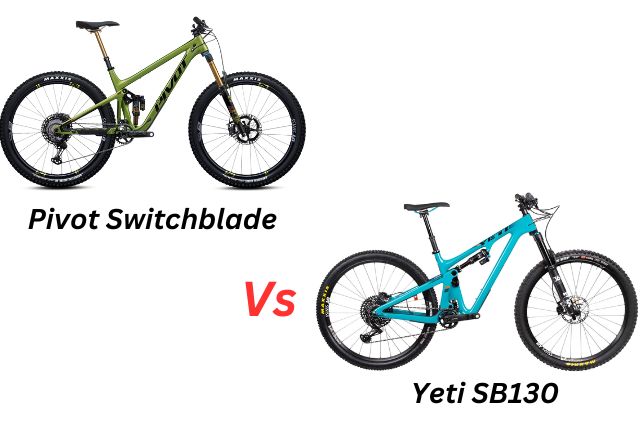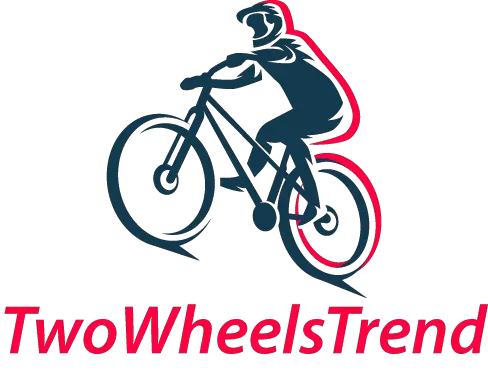
Pivot Switchblade and the Yeti SB130 have a lot in common, but also some key differences that might make one more suitable for you than the other.
Here, we will compare the features, geometry, performance, and price of these two bikes and help you decide which one is the best fit for your needs.
Features
Both the Pivot Switchblade and the Yeti SB130 are 29er trail bikes that feature carbon frames, 150mm of front travel, and 130mm of rear travel. They use modern suspension designs that aim to provide efficient pedaling, smooth bump absorption, and progressive leverage curves.
The Pivot Switchblade uses the DW-link system, which is a dual-link design that isolates pedaling forces from braking and suspension forces.
The Yeti SB130 uses the Switch Infinity system, which is a linear rail design that allows the main pivot to move up and down depending on the suspension position.
Pivot Switchblade
The Pivot Switchblade has some unique features that set it apart from other trail bikes, such as the Super Boost Plus rear hub spacing (157mm), which allows for wider tire clearance, stiffer wheels, and shorter chainstays.
The Switchblade also has an adjustable geometry via a flip-chip in the lower shock mount, which lets you choose between a low and high setting. The low setting lowers the bottom bracket by 7mm and slackens the head angle by 0.5 degrees, while the high setting raises the bottom bracket by 7mm and steepens the head angle by 0.5 degrees.
Yeti SB130
The Yeti SB130 also has some distinctive features that make it stand out from the crowd, such as the Lunch Ride (LR) version, which is a factory-modified version that comes with a 160mm fork instead of a 150mm fork, a coil shock instead of an air shock, and more aggressive tires and cockpit components.
The LR version is designed to offer more downhill performance and fun without compromising too much on climbing efficiency. The SB130 also has a patented seat tube design that allows for a longer dropper post insertion depth than most other bikes in its category.
Read Also: Pivot Trail 429 vs. Ibis Ripley: Compared
Geometry
The geometry of both bikes is fairly similar, but there are some subtle differences that might affect how they feel on the trail.
Here is a comparison of the geometry numbers for both bikes in size large and in their low settings:
| Geometry | Pivot Switchblade | Yeti SB130 |
|---|---|---|
| Reach | 475 mm | 480 mm |
| Stack | 618 mm | 614 mm |
| Head Angle | 65.5 degrees | 65.1 degrees |
| Seat Angle | 75.5 degrees | 76.9 degrees |
| Chainstay | 431 mm | 433 mm |
| Wheelbase | 1221 mm | 1218 mm |
| BB Height | 341 mm | 337 mm |
As you can see, the Yeti SB130 has a slightly longer reach, a slightly slacker head angle, a slightly steeper seat angle, and a slightly lower bottom bracket than the Pivot Switchblade.
These differences might make the SB130 feel more stable at high speeds, more comfortable on steep climbs, and more planted in corners than the Switchblade. On the other hand, the Switchblade might feel more agile at low speeds, more balanced on flat terrain, and more poppy on jumps than the SB130.
Performance
Both bikes are designed to perform well on a wide range of trails, from flowy singletrack to technical descents. However, they might have some strengths and weaknesses depending on your riding style and preferences.
Here are some general impressions based on online reviews and user feedback:
Pivot Switchblade
The Pivot Switchblade is praised for its versatility, efficiency, and playfulness. It is said to be easy to pedal uphill, thanks to its DW-link suspension and lightweight frame. It is also said to be fun to ride downhill, thanks to its adjustable geometry, super boost rear end, and lively character. It can handle rough terrain well, but it might not be as composed or confident as some other bikes in its category when things get really steep or gnarly.
Yeti SB130
The Yeti SB130 is praised for its stability, traction, and speed. It is said to be fast and smooth on any trail, thanks to its Switch Infinity suspension and slack geometry. It can tackle steep and technical terrain with ease, thanks to its long reach, steep seat angle, and coil shock option.
It can also handle jumps and drops well, thanks to its progressive leverage curve and stiff frame. However, it might not be as nimble or playful as some other bikes in its category when it comes to tight turns or slow maneuvers.
Price
Both bikes are premium products that come with high-end components and high price tags.
The Pivot Switchblade starts at $5,499 for the Race XT build, which comes with a Fox 36 Performance fork, a Fox DPX2 Performance shock, a Shimano XT 12-speed drivetrain, and DT Swiss M1900 wheels.
The Yeti SB130 starts at $5,699 for the C1 build, which comes with a Fox 36 Performance fork, a Fox DPX2 Performance shock, a SRAM GX Eagle 12-speed drivetrain, and DT Swiss M1900 wheels.
The prices go up from there depending on the build kit and frame color options.
Read Also:
Conclusion
The Pivot Switchblade and the Yeti SB130 are both excellent trail bikes that can handle almost anything you throw at them. However, they might suit different riders and preferences better depending on what you are looking for in a bike.
